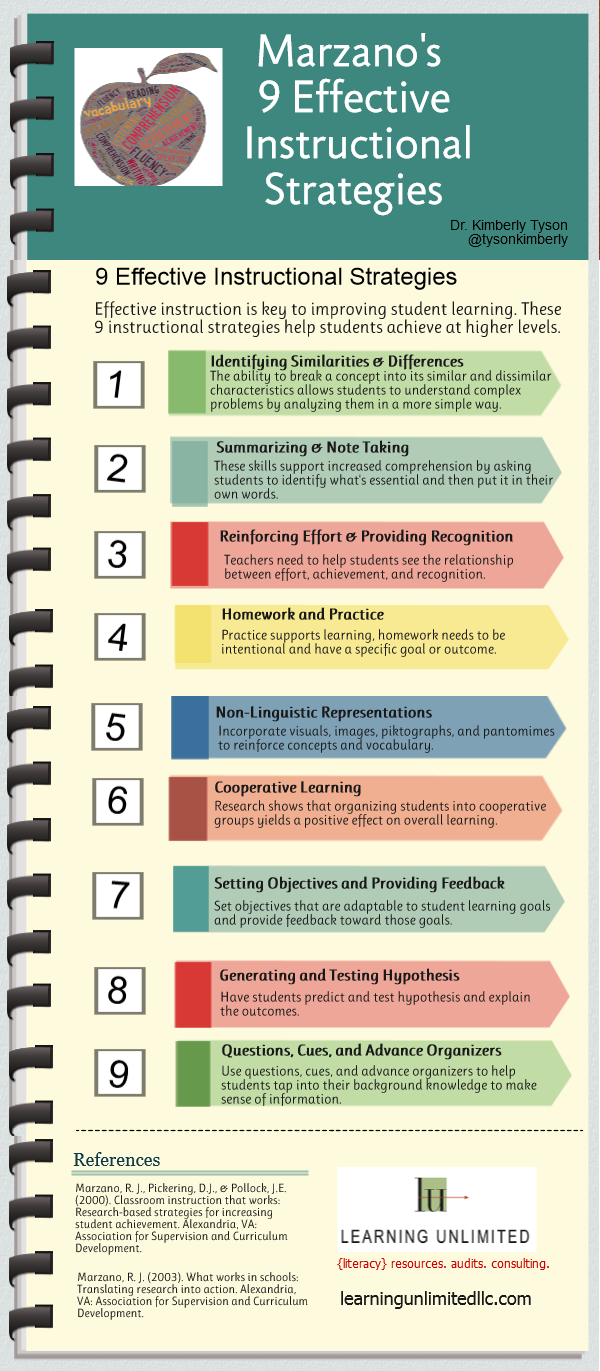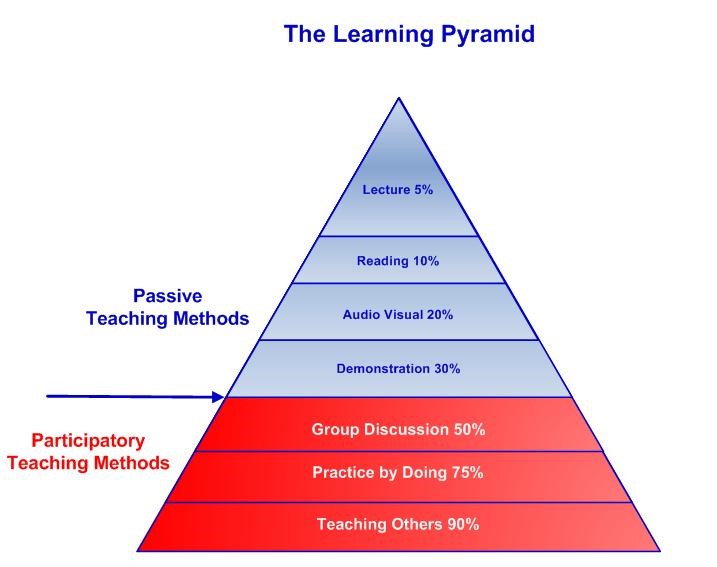5 Reasons Why Strong Instruction Affects Bully Prevention
2/11/2017

Back to the main Bully Prevention Guide.
STRONG INSTRUCTION…that's the ticket! No one will argue that having the most effective bully prevention program and strong school policies are intricate pieces to stopping bullying, but effective instruction is even more important! After listening to Principal Kafele recently, I now understand more than ever, that administrators must focus on good instruction.
Good administrators spend time in classrooms. They know their teachers well and they know the content in which they teach. They understand that curriculum can only be taught to students that trust them and that are engaged. Likewise, good instructors know their content well and know their students even better. They understand that bully prevention starts with them.
Administrators and teachers must work together to determine the best way information should be taught to students. Educators know that teaching a stand-alone lesson on bullying isn't as effective as also connecting the content to real world situations and what is happening currently in the school.
What evidence do administrators and teachers have to prove that their bully prevention program is being taught effectively and students are using the information? Here are five reasons why strong instruction affects bully prevention.
PU #104 - Strong Content and Relatable Examples
Bully prevention curriculum needs to contain strong content that is based on examples that students can relate to and understand. Using real life situations and scenarios to teach what adults would do is one thing, but using these situations with students in the school can be difficult. The scenarios must be flexible and moldable to each individual school. Teachers must understand and actually deal with bully situations in order for the content to be relevant. Teachers who are not in touch with the pulse of the school and their classroom will find that these lessons may not improve bullying whatsoever. Again, I stress the fact that strong instruction starts with strong teachers.
One of the most popular curriculums, Olweus Bullying Prevention Program, includes the following types of information in the lessons or "class meetings" at the elementary, middle, and high school levels:
- building a positive classroom climate
- identifying feelings
- communication
- hot spots
- peer relationships
- respecting differences and promoting acceptance
- serving the community/reaching outward
- using current events
Teachers not only connect lessons to what is going on in the school, but they must also introduce topics and strategies that students will encounter. This symbiosis makes bully prevention quite intricate. Whether our students are ready for certain information is dependent on what the teacher believes should be taught at the time. This is subjective and we must rely on the professionalism of the teacher and the choices they make. Grade level teams can be powerful. Grade levels can discuss the topics they feel should be taught, discussed, and worked on by students and adults. Teacher mentors, administration, and instructional coaches can play a part in these discussions as they can team together to provide the best instruction possible for given bullying topics.
PU #105 - Engagement, Active Participation, Instructional Strategies, and Opportunities to Create Strong Relationships
The ability to engage students in bully prevention curriculum can be difficult. Teachers must understand how to get students talking, interacting, and be given several opportunities to communicate with other students and the teacher. The use of learning structures that get students up and talking are the most effective for discussion-based and opinion-based questions. Not only do learning structures give all students an opportunity to respond, it gives them the ability to talk to other students in the class which in turn creates a stronger classroom culture.
Learning structures such as Kagan Cooperative Learning can be taught school-wide and most of the structures can be used K-12. Structures as simple as Think-Pair-Share can get students to participate in deeper discussions rather than a teacher posing one question and having one student answer! For example, a teacher poses the question, "What words can a defender use to stop a bully from making mean comments?" First, the teacher says, "Think in your mind of some words that a defender can use. In 30 seconds you will be sharing." The teacher makes sure to give 30 seconds for students to think. This covert active participation technique is not used enough in education, especially with bully prevention lessons. Then the teacher says, "Turning to your elbow partner, partner A will tell partner B some words they can use. When done then Partner B will in turn, and tell Partner A. Ready, go."
Active participation techniques should be used during instruction to make sure students are engaging with the content. Whether students are repeating whole group responses for some questions, or are turning to a partner to give a "thumbs up," questions posed should include a good mix of individual, partner, small group, and whole group responses. Students may even use pinch cards that fold into A, B, C, or D responses and the student pinches the card according to specific answer. You can access a great resource for active participation techniques by clicking on the Shasta County Office of Education, based out of Redding, CA.
In order for bully prevention lessons to be effective, research-based instructional strategies should be in every lesson. Two of the top education gurus, Robert Marzano and John Hattie, have done extensive research into what works best with students. Here are Marzano's top nine instructional strategies (infographic created by @TysonKimberly):

Here are the top 10 instructional strategies from John Hattie's extensive meta-analysis research:
- Providing Formative Assessment (i.e. assessing along the way with touchpoints)
- Micro Teaching (i.e. Daily Five Mini Lesson)
- Comprehensive Interventions (i.e. Response to Intervention)
- Teacher Clarity (i.e. organization + explanation + examples + guided practice + assessment)
- Reciprocal Teaching (i.e. student led small group book discussions)
- Feedback (i.e. teacher gives immediate feedback towards goals)
- Student-Teacher Relationships (i.e. programs and philosophies implemented that build relationships between student and teacher, High Trust Philosophy)
- Space vs. Mass Practice (i.e. chunked instruction using Daily 5 mini Lessons)
- Metacognitive Strategies (i.e. teaching students how they can learn best, Art Costa's Habits of Mind)
- Self-Verbalization / Self-Questioning (i.e. using the SQ3R technique)
Classrooms that model and practice learning structures have a stronger culture of togetherness when kindness is a priority. Students learn to listen and respect each other's opinions, which in turn creates empathy towards classmates. When students build strong relationships through these learning structures, it is then that bullying behaviors can be defeated.
Teachers who work with students who have anxiety and have experienced trauma will need to take measures in their classrooms to accommodate them. Trauma-informed classrooms need teachers who know how to build strong relationships with their kids. In order to change a student's path most of the research (Iowas ACEs 360) talks about the following:
- building resiliency and coping strategies,
- making resources more readily available (mental health services, health care, parenting classes, etc…),
- building in protective factors (parental resilience, social connections, nurturing and attachment, knowledge of parenting and child development), and
- building and cultivating communities that take care of each other.
PU #106 - Strong Lesson Design
Strong lesson design can follow many formats, but the progression should start with getting students engaged in the topic, communicating an objective and rationale, guiding students to explore more, and then practicing the skills they garner in a safe environment. Lastly, teachers should have a way of determining their success by assessing the objective. That assessment data should guide the next bully prevention lessons taught by the teacher.
Check out our teacher lesson plans.
Many of us grew up with the Madeline Hunter lesson design. Many teachers use this format today in their classrooms and it is still a proven and effective format. Here are the common steps in her lesson design (note: these can be in a different order, some may not be present in every lesson, and some portions can be repeated):
- Anticipatory Set (In what way will you activate their prior knowledge and experience to help them relate to today's lesson.) Focus attention, brief practice on previous/related learning.
- Objective/Purpose (The object is what students will be able to know/do by the end of this lesson. The overarching purpose/understanding is the broad goal/curriculum standard related to the discipline).
- Instructional Input (What knowledge will you communicate to the student--tell, lecture, stand up and deliver so that the student will understand the objective.) Disseminates new information and activities to achieve the stated objectives.
- Modeling (How will you show/demonstrate the skill or competence so the student will also be able to do it?) Demonstration and/or example of the acceptable finished product or process.
- Checking for Understanding (How will you check that the students have understood/learned the objectives?) Activities that examine the student's possession of central and essential information to achieve the stated objective.
- Guided Practice (What activities will the students perform under your supervision to ensure that they are able to practice the material. If they make mistakes, you are able to show them how to do it correctly.) Close monitoring and direction of the students by the instructor as they practice the whole task for the first time independently of each other.
- Independent Practice (List homework or seatwork assignments the students are given to successfully practice the material/skill without teacher supervision.) Only after you know the students can proceed, the continued practice of the whole task by the students without the instructor's monitoring and guidance.
Similarly to Madeline Hunter, many teachers use the age-old "I do, we do, you do" model. It is still a powerful design to get students involved. A teacher uses direct instruction to teach a concept. The students then practice together the skill or concept. Lastly, when the students are ready, they practice the skill or concept on their own.
The inquiry model is another powerful lesson design. Students pose questions that they would like answered. They then delve into researching, exploring, and even experimenting to determine the best possible answer to the questions posed. Students then explain the evidence collected and connect it to knowledge gained in the exploring process. Lastly, they then create an argument and justification for the explanation.
Gone are the days of simply lecturing to students and hope they are listening, taking notes, and are able to regurgitate the information later. Research states that lecture-based learning has a low probability of retention. In fact, the Peak Performance Center states that lecture only has a rate of 5% retention. Here is a diagram they composed that states the differences between active and passive teaching methods.

PU #107 - Students Putting It into Action
A great bully prevention lesson should put students into action. Students should be able to use the information in any setting, and even outside of school. Adults in the school will be able to see and catch students using the content, strategies, and words in different scenarios. When this happens, teachers know their lessons are effective.
Too many times you hear teachers say, "Well, I taught them that," when the student is unable to come up with the correct answer or action. My question to these teachers is, "How well did you teach it?" Good teachers understand that some content needs more than a one-time lesson, and many students need multiple opportunities to grasp the concept or strategy.
Educators should celebrate the actions of these students when they display the words and actions from the bully prevention lessons. What we place value on is what we will get out of in the end. The more we focus on the positive, the more likely positive behaviors will occur. It can change the culture of a school and it becomes who we are as a school and a learning community.
PU #108 - Creative and Effective Assessment and Evaluations
Assessment and evaluations are powerful tools when teachers use the data to guide their instruction. This is the same for bully prevention lessons. Teachers must create ways to track the effectiveness of their lessons. Without this data, teacher effectiveness and bully incidents may not see improvements.
Educators must use quick assessments and evaluations to determine if students met the lesson's objective. Unfortunately, many teachers teach the bully prevention lesson without adding in this last piece. They teach the lesson because administration and the district require it. For the lesson to be effective and make an impact, a good teacher will add some type of formative or summative assessment in the lesson.
Quick assessments such as quick writes, short multiple choice quizzes, even cloze activities can give teachers strong data that can determine a teacher's next steps. Quick write assessments give teachers good information into the minds of the students as they use their own words to tackle bullying topics.
Self-assessment is another tool that educators can use with bully prevention lessons. In these lessons, students can reflect in two different manners: 1) self-assess how well they are learning the content, or 2) self-assess how well they are using or have used the content. Adding this component to every lesson helps ensure students are making emotional connections to the content. This obviously raises the likelihood that students will be using the strategies or concepts in future bullying situations.
MORE BULLYING PREVENTION GUIDE RELATED READINGS:
- 3 Types of Bullying in School + 1 Immense Social Challenge
- 5 Reasons Why Schools Have a Difficult Time Stopping Bully Behaviors
- 5 Reasons Why We Need to Define Bully Behavior and Stop Generalizing Events as "Bullying"
- 6+ Steps to Addressing Bullying When It Occurs
- 9 Strategies We Can Teach Students to Problem Solve
- 7 Ways How to Raise a Defender of Bully Prevention
- Provocative Victims and 7+ Practices for Victory
- One School Wide Philosophy: High-Trusting Relationships
- 13 Ideas to Combat Bullying at the Community Level
- 6 of the Most Hideous Cyber Bullying Tactics Used By Students
- 11 Communication Strategies to Combat Bullying
- 20 Ideas To Successfully Use Bully Data
- 5 Reasons Why Strong Instruction Affects Bully Prevention (Currently here)
- #1 Instructional Lesson for All Students on Bully Prevention
- Power of Buddy Classrooms: 19 Ideas
- 8 Ways to Teach Empathy
- 10 Ways to Empower Defenders
- 9 Reasons Culture Trumps Strategy
- One School Wide Strategy: Kindness Campaign
- Learning How to Say No and Set Boundaries with Parents - November 21, 2022
- If You Had Only One Behavior Strategy to Use in Your Classroom, What Would It Be? - September 26, 2022
- Live Your Code: 7 Strategies That Will Help You Be the Most Effective Educator You Can Be - August 15, 2022











